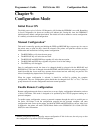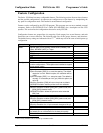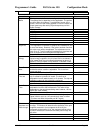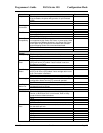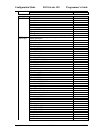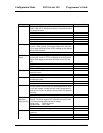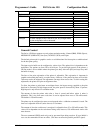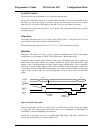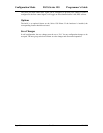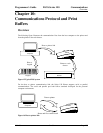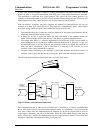
Programmer's Guide PcOS Series 150 Configuration Mode
12/14/99 Rev G Page 101
5 – Swedish I
6 – Italian
7 – Spanish I
General Recommendation
8 – Japanese
9 – Norwegian
10 – Danish II
11 – Spanish II
12 – Latin American
13 – French Canadian
14 – Dutch
15 – Swedish II
16 – Swedish III
17 – Swedish IV
18 – Turkish
19 – Swiss I
20 – Swiss II
64 – Publisher
Zero
Character
The zero character can be configured to be unslashed or
slashed in all character sets except IBM 64 and 65 which
override this setting.
Unslashed
Slashed
Interface The Series 150 Printer supports either a serial or parallel
communication link.
Parallel Mode This setting should not be changed except from parallel to
IEEE 1284.
Parallel
IEEE 1284
Parallel Link
Options
The parallel option features define how the strobe, busy, and
acknowledge signals operate. In normal mode, the printer
follows the standard (Centronics) parallel port conventions.
With Options 1 and 3, the acknowledge and busy signals
change at the same time. This is sometimes referred to as
Ack-after-Busy. Options 2 and 3 force busy high on the rising
edge of strobe. This is sometimes referred to as Busy-while-
Strobe timing. In all cases, the data is latched on the rising
edge of the strobe. In most cases, the normal timing mode
will give the best and most universal results.
Normal Ack-while-Busy
Option 1 Ack-after-Busy
Option 2 Ack-while-Busy
Option 3 Ack-after-Busy
Parity The serial mode parity can be set to none, odd, or even.
None
Odd
Even
Bit Data The serial bit format can be set to 8 or 7.
8
7
Protocol The flow control protocol/serial link can be set to Ready/Busy
or XON/XOFF. If XON/XOFF is selected, Ready/Busy also
functions.
Ready/Busy
XON/XOFF



